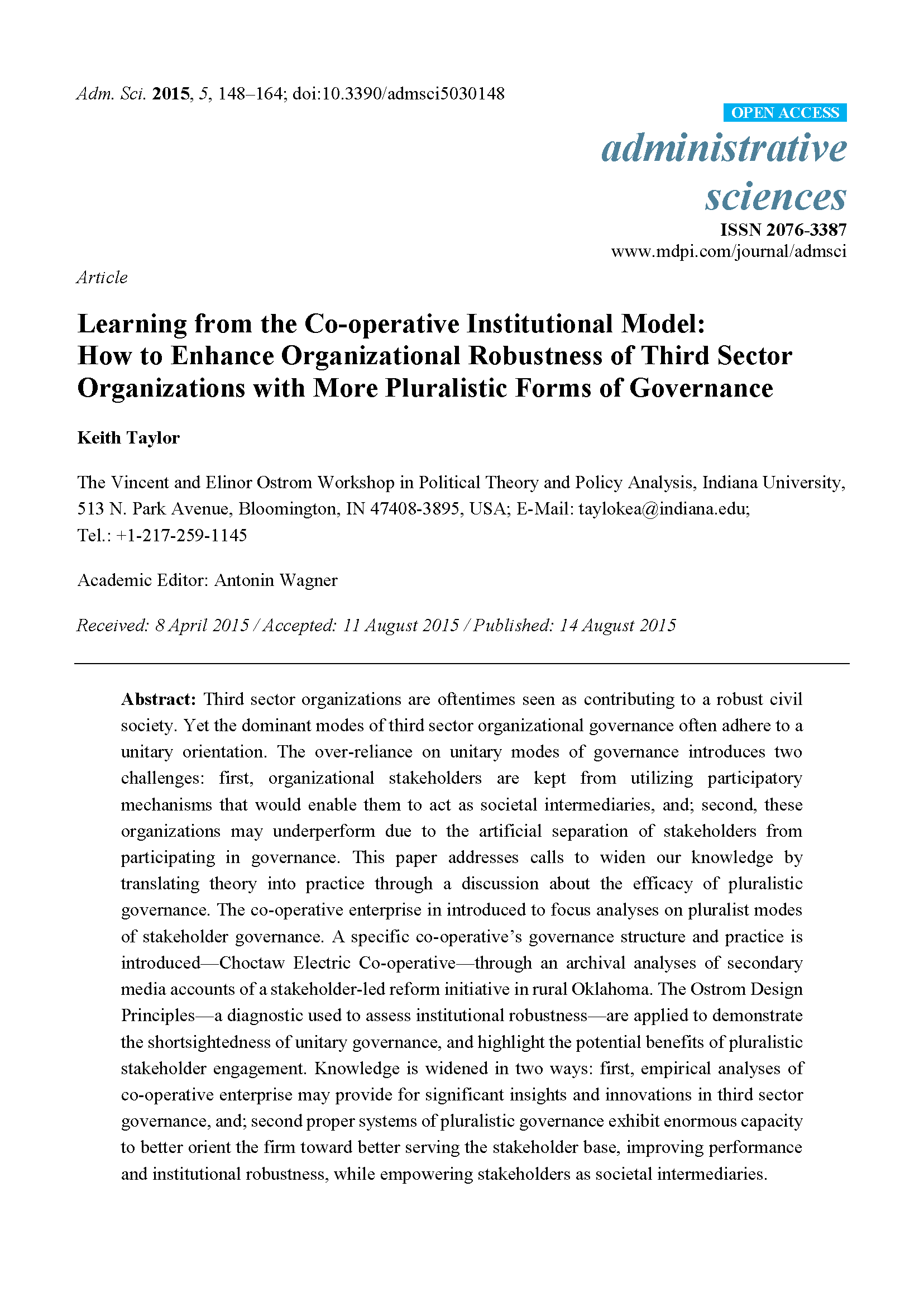Learning from the Co-operative Institutional Model: How to Enhance Organizational Robustness of Third Sector Organizations with More Pluralistic Forms of Governance
Recommended Citation
Taylor, Keith. 2015. “Learning from the Co-Operative Institutional Model: How to Enhance Organizational Robustness of Third Sector Organizations with More Pluralistic Forms of Governance.” Administrative Sciences 5 (3): 148–164. doi:10.3390/admsci5030148.
Abstract
Third sector organizations are oftentimes seen as contributing to a robust civil society. Yet the dominant modes of third sector organizational governance often adhere to a unitary orientation. The over-reliance on unitary modes of governance introduces two challenges: first, organizational stakeholders are kept from utilizing participatory mechanisms that would enable them to act as societal intermediaries, and; second, these organizations may underperform due to the artificial separation of stakeholders from participating in governance. This paper addresses calls to widen our knowledge by translating theory into practice through a discussion about the efficacy of pluralistic governance. The co-operative enterprise in introduced to focus analyses on pluralist modes of stakeholder governance. A specific co-operative’s governance structure and practice is introduced—Choctaw Electric Co-operative—through an archival analyses of secondary media accounts of a stakeholder-led reform initiative in rural Oklahoma. The Ostrom Design Principles—a diagnostic used to assess institutional robustness—are applied to demonstrate the shortsightedness of unitary governance, and highlight the potential benefits of pluralistic stakeholder engagement. Knowledge is widened in two ways: first, empirical analyses of co-operative enterprise may provide for significant insights and innovations in third sector governance, and; second proper systems of pluralistic governance exhibit enormous capacity to better orient the firm toward better serving the stakeholder base, improving performance and institutional robustness, while empowering stakeholders as societal intermediaries.

